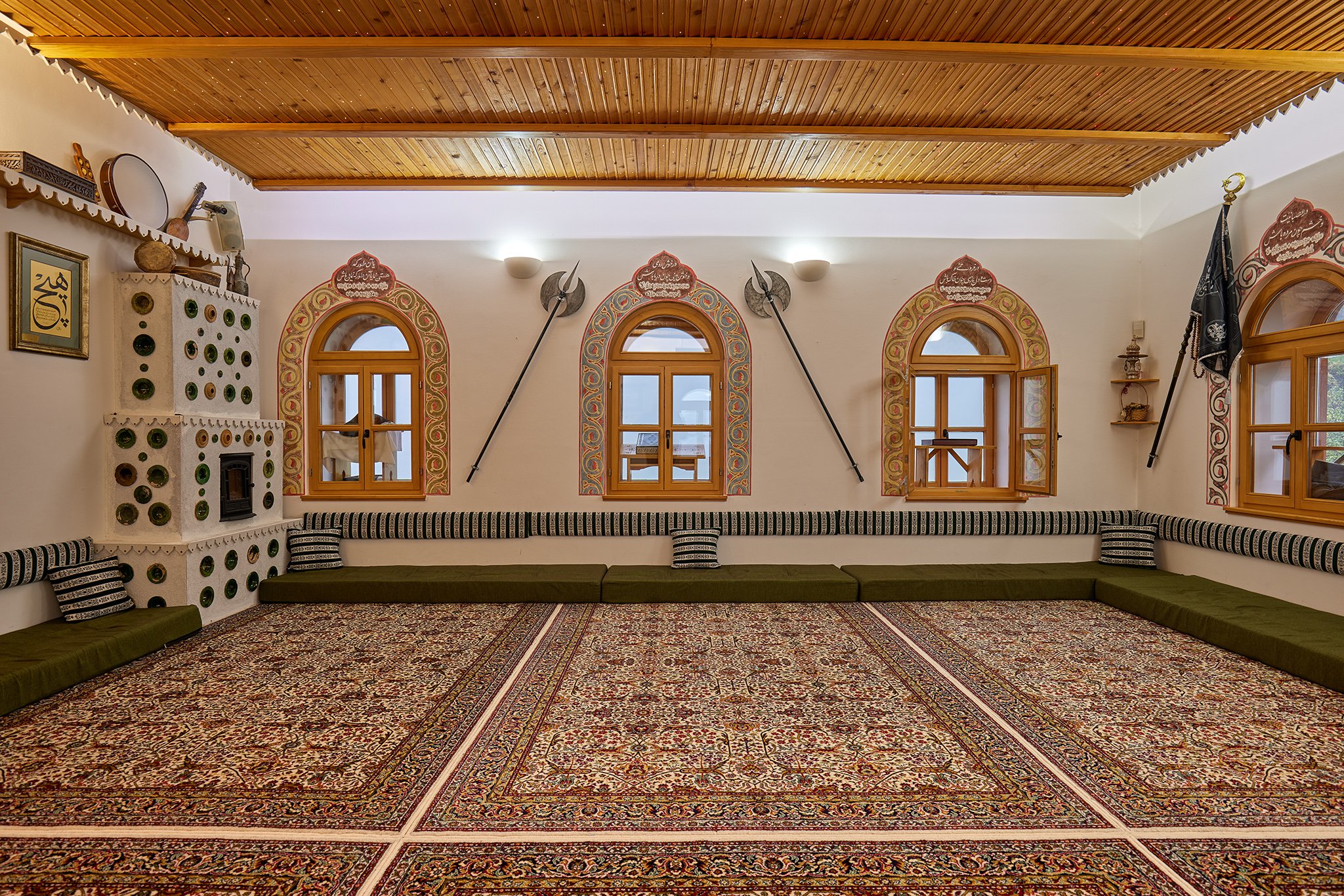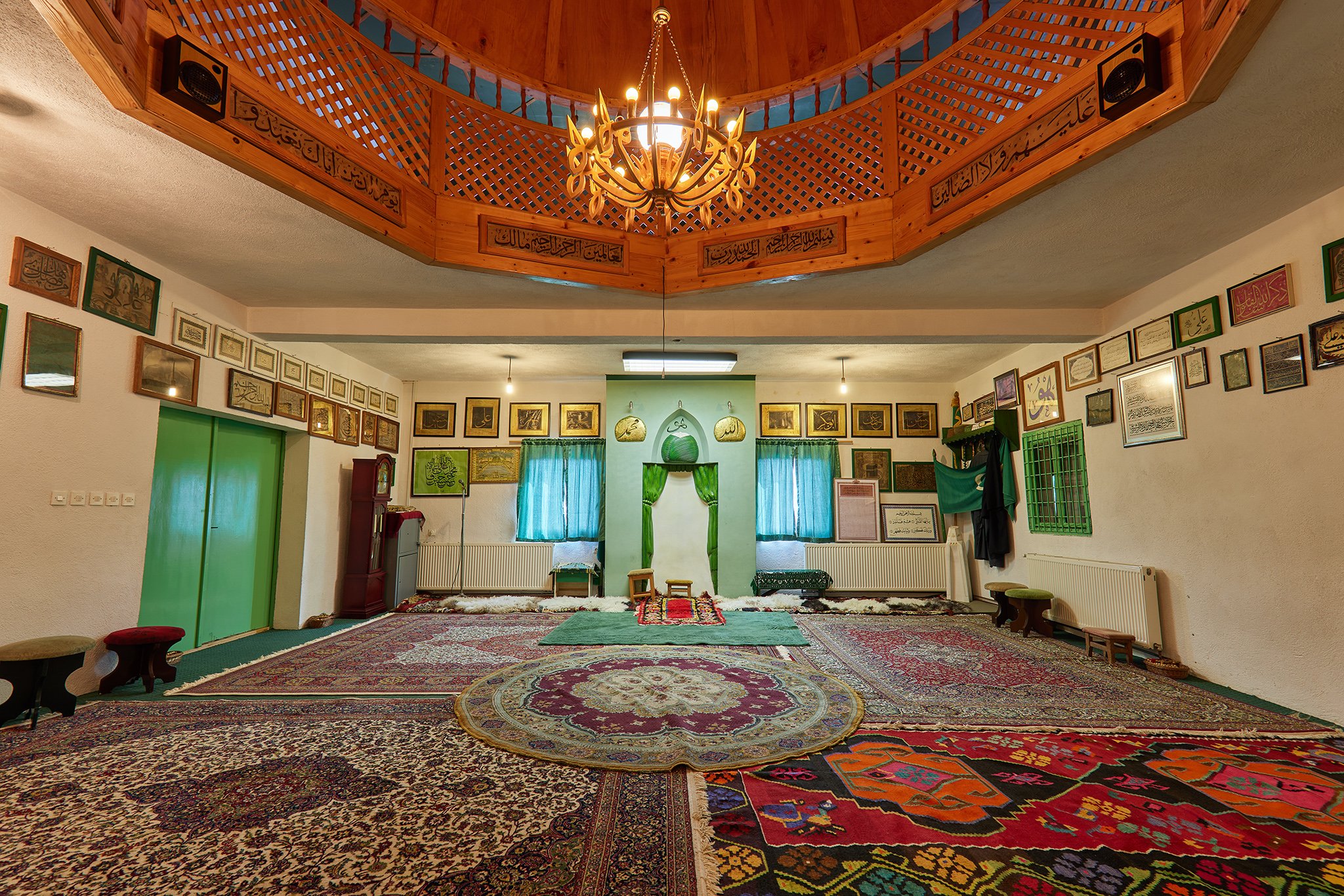
13:
MYSTICAL ISLAM IN THE BOSNIAN WORLD
-

BOSNIAN WORLDS OF SUFISM
The history of Islam in Bosnia and Herzegovina and in the Balkans is inseparable from the history of Sufism in these regions.
-

THE ESTABLISHMENT OF DERVISH ORDERS AND SUFI TRADITIONS IN BOSNIA
Islamic mysticism – Sufism encompasses a set of beliefs and practices followed by many Muslims as a way of drawing closer to God and gaining personal experience or direct knowledge of the Divine.
-

TEKKE OF NAQSHBANDI TARIQAT IN STOLAC
The tekke of the Naqshbandi tariqat in Stolac, built in 2015 and surrounded by greenery, a rose garden and course of the river Bregava. The construction of the tekke in the 21st century testifies to the living tradition of Sufi Islam in Bosnia and Herzegovina.
-

SUFI IDEAS IN BOSNIAK’S POETRY IN PERSIAN
Sufi literature in Persian had a far-reaching and multiple effect on many literatures of Muslim nations, including Arabs and Turks, which reflected Sufi ideas and motifs. However, there have been reverse influences, particularly of the Arabic on Persian poetry.
-

TEKKE IN BLAGAJ ON THE RIVER BUNA / ZIKR
The tekke in Blagaj on the river Buna, which today belongs to the Naqshbandi tariqat. It was built next to a spring which is considered one of the largest in Europe, and the current building dates back to the mid-19th century. The dovište (pilgrimage site) at the spring of the Buna has a particularly important place in the history of Bosnian Muslims.
-

HASAN KAIMIJA - A REBEL AND A POET
The second half of the 17th century was marked by the appearance of one of the most remarkable personalities in the culture and tasawwuf of Bosnia and Herzegovina, whose spiritual-intellectual horizons by far exceed geographic-historical framework where he lived and worked.
-

THEORY OF RECEPTION AND UNDERSTANDING OF BOSNIAK SUFI LITERATURE
The issue of contemporary reception of Sufi literature of Bosniaks in Oriental language is very important and worth returning to and updating.
-

SHEIKH ILHAMIA’S TOMB (TURBE) IN TRAVNIK
Interview with Mr. Esad Baždalić, one of the last turbedars in Bosnia and Herzegovina
-

HADŽI SINAN TEKKE
Sufism, or spiritual commitment on the road to the knowledge of God is deeply rooted in the tradition of Bosniaks.
-

DERVISH ORDERS IN BOSNIA AND HERZEGOVINA
Tasawwuf or Sufism is the esoteric or inner dimension of Islam, which has developed a particular methodology of the “inner path”, a distinctive practice of acquiring the knowledge, interpretation and living principles of Islam.
-

BEHRAM-EFENDIJA’S MOSQUE, TOMB AND KUNJA
Banja Luka, Bosnia and Herzegovina
-

JALALU-D-DIN RUMI BELHI AND MASNAVI-I MA’NAVI
For its calligraphic beauty and value, a special place in the collection of Bosniak Institute – Foundation Adil Zulfikarpašić is held by the transcript of Masnavi (Matnawi-i Ma'nawi) by Jalal al-Din Rumi.
-

TEKKE AT VUKELJIĆI – BEGINNING OF A SPIRITUAL LINE
At a plateau in Central Bosnia, between Fojnica and Vitez, is the village of Vukeljići, which can be considered the core of Naqshbandi tariqa of Bosnia and Herzegovina, as well as of tasawwuf spirituality. It is in this village that a tekke was built almost two and a half centuries ago.
-

HASAN KAIMI-BABA
Hasan Kaimi-baba Zerrin Oglu (Zerinović, Zrnić, Zrinić) is one of the most famous Bosnian shaykhs, who is better known from stories and legends than from documentary biographic data (passed away in 1691–'92). The scarce historical data which often interweave with folk stories do not allow an insight into the life and activity of shaykh Hasana Kaimija.
-

TEKKE AT KAĆUNI
On the main road from Kiseljak to Busovača there is a picturesque flatland village – Kaćuni, and in this beautiful village one can see an extraordinary building complex which attracts attention to its unique purpose.
-

CONCEPTUAL SOURCES OF SUFISM
Many works have been written and many discussions led on establishing and clarifying conceptual inspirations and sources of Sufism. Some even attempted to prove that ideological background on which Sufism emerged and developed is, essentially, non-Islamic.
-

FEATURES OF SUFI POETRY
Sufi literature, particularly poetry, signs about several fundamental topics in the broadest sense, and it sometimes seems that the entire Sufi literature is compressed or enclosed into very firm and rigid frames and clasps.
-

LANGUAGE AND TERMINOLOGICAL SOURCES OF SUFISM
Sufism has developed distinctive language instruments, a diverse and extremely multilayered terminological system abounding in metaphors and symbols.
-

SYMBIOSIS BETWEEN SUFISM AND LITERATURE
It seems that Sufis moved through and felt in poetry as if on their own turf. Literature and poetic form offered them the opportunity to achieve multiple goals.
-

HASAN KAIMIJA’S TOMB (TURBE)
Kula - Zvornik, Bosnia and Herzegovina
-

ISA-BEG TEKKE IN VRATNIK
Sarajevo, Bosnia and Herzegovina
-

TOMBS (TURBES) IN VUKELJIĆI
Vukeljići - Fojnica municipality, Bosnia and Herzegovina
-

TEKKE IN VUKELJIĆI
Vukeljići - Fojnica municipality, Bosnia and Herzegovina
-

MUSEUM IN VUKELJIĆI
Vukeljići - Fojnica municipality, Bosnia and Herzegovina
-

GAZI HUSREV-BEY’S HANIKAH
Sarajevo, Bosnia and Herzegovina
